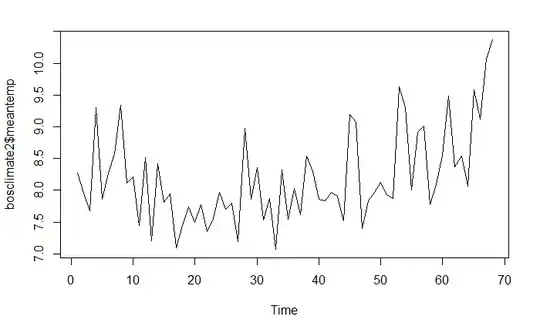Certainly you can do that, if you know the frequency of your seasonality. After all, there are annual time series that do exhibit cyclical behavior, e.g., sunspots have an 11-year cyclicality and could thus be modeled using SARIMA.
That said, I do not see a recurring pattern in your time series, other than "sometimes it's high, and then it usually comes down again, perhaps after a while, except when it doesn't, and then it goes up again, usually at least". May I suggest that you are at least open to the possibility that you are reading more into your data than is actually there? Unless there is some theory that underpins a five-year cycle (say), but not a seven-year one, I would be very careful indeed. (And note that humans are very good at post hoc explanations of stuff, even if those explanations do not help in predicting.)
